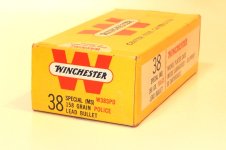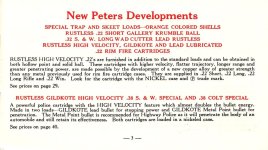Oh Boy! Another several thousand woids regarding "Which best ammo shall I use?" In my earlier years, I recall reading in a book by a popular (?) scribe, claiming the .38 Spl. is "weak", but the .45 ACP "Comes on like a well-trained Rhinoceros!" And other Malarkey, which continues to this day! Most professionals likely disregarded this "wisdom", although it contains a smidgen of truth. Today, we have much evidence that the "one-stop shot" is not a myth, but an unsure thing, and there is evidence that most handgun cartridges are quite similar in effectiveness. We have regular questions like "Do I DARE shoot .38 Specials in my 357 Magnum?"Orrr..."Why wouldn't-couldn't-shouldn't I use my sock drawer .22 for defense?" And the most common; " Can I shoot 357s in my 14 ounce ez carry, short barrelled flamethrower?" Discussion is good, and opinions abound, But sources like Lucky Gunner, as imperfect as they may be, and even some YouTube presenters give good, repeatable opinions. IMNHO, almost any "self defense" round, made by any of the major manufacturers wil be more than adequate, given a competent shooter. That doesn't mean they must $hoot thou$ands of rounds a week, in these days...a major expen$e...but enough to be well acquainted with their gun and load. It helps if a person can load practice ammunition that resembles their defense load. I watched an old black and white WWII film about training Bombardiers(?sp) and believe what an instructor said was applicable to us:"Hit the target, hit the target, HIT THE TARGET!" All else is of minor importance.




